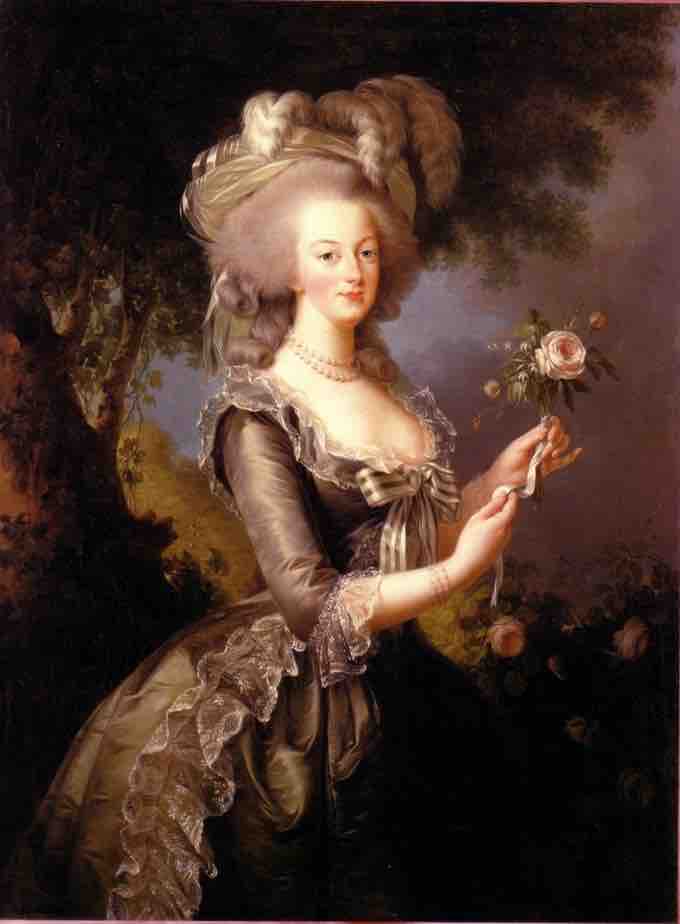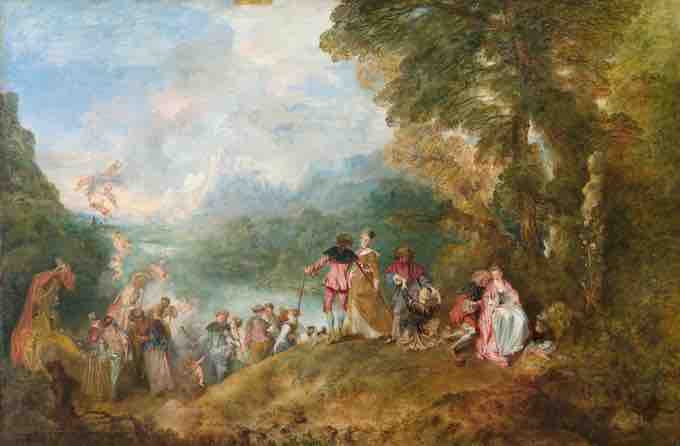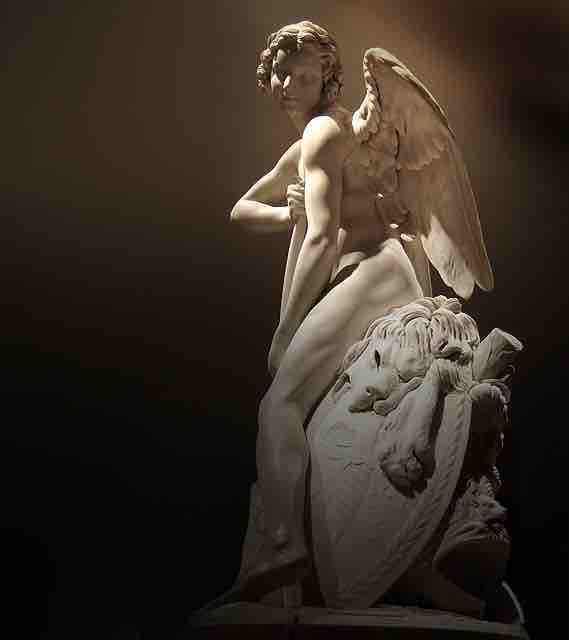Eighteenth-century French art was dominated by the Rococo and Neoclassical art. In France, the death of Louis XIV led to a period of licentious freedom commonly called the Régence, when painting turned toward "fêtes galantes," theater settings, and the female nude.
Rococo, also referred to as Late Baroque, is an eighteenth-century artistic movement and style, which developed in Paris as a reaction against the grandeur, symmetry and strict regulations of the Baroque, especially that of the Palace of Versailles. In such a way, Rococo artists opted for a more jocular, florid and graceful approach to Baroque art and architecture. Rococo was ornate and made strong usage of creamy, pastel-like colors, asymmetrical designs, curves, and gold. Unlike the more politically focused Baroque, the Rococo had more playful and often witty artistic themes.
Though Rococo originated in the decorative arts, the style showed clearly in painting. Rococo painters used delicate colors and curving forms, playfully decorating their canvases with cherubs and myths of love. Portraiture was also popular among Rococo painters. Some works show a sort of naughtiness or impurity in the behavior of their subjects, showing the historical trend of departing away from the Baroque's church and state orientation. Landscapes were pastoral and often depicted the leisurely outings of aristocratic couples. Other Rococo portraiture included members of the French royal family in Versailles settings.

Marie Antoinette
Élisabeth Vigée-Lebrun, Marie Antoinette à la Rose, 1783.

Pilgrimage on the Isle of Cythera
Antoine Watteau, Pilgrimage on the Isle of Cythera (1717, Louvre) captures the frivolity and sensuousness of Rococo painting.
Sculpture was another area where the Rococo was widely adopted. In general, this style was best expressed through delicate porcelain sculpture rather than imposing marble statues. As in painting, the themes of love and gaiety (often symbolized with cherubs) were reflected in sculpture, as were elements of nature, curving lines and asymmetry.

Rococo Cupid
Cupid fashioning his bow from Hercules' club, by Edmé Bouchardon, 1747–50: Rococo in subject and treatment
The middle of the eighteenth century saw a turn to Neoclassicism in France, that is to say a conscious use of Greek and Roman forms and iconography as opposed to the light pastels of the Rococo style. In painting, the greatest representative of this style is Jacques Louis David who, mirroring the profiles of Greek vases, emphasized the use of the profile; his subject matter often involved classical history. The French neoclassical style would greatly contribute to the monumentalism of the French Revolution, as typified in the structures La Madeleine Church, which is in the form of a Greek temple, and the mammoth Panthéon (1764-1812) modeled on the ancient Roman Pantheon.
The rationalism and simplicity of classical architecture was seen by contemporaries in the Age of Enlightenment as the antithesis of the backward-looking Gothic aesthetic style. During the French Revolution, the Greek and Roman subject matters were also often chosen to promote the values of republicanism over the frivolous Rococo art of the nobility. Hence, there are many paintings that glorify the heroes and martyrs of the French Revolution, such as David's iconic painting of the assassination of Jean-Paul Marat, that are inspired by classical aesthetic forms.